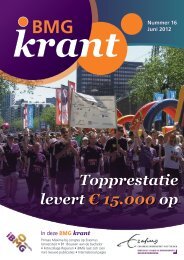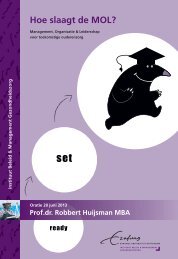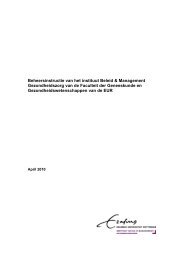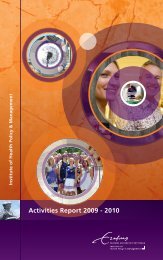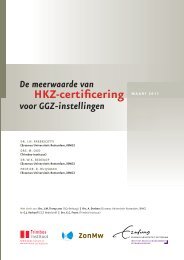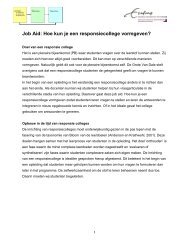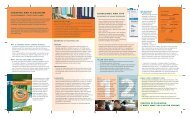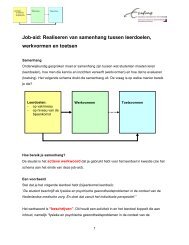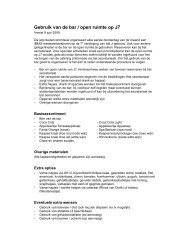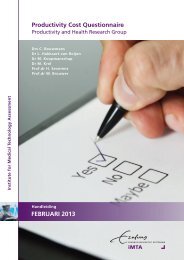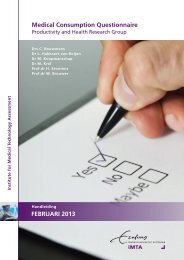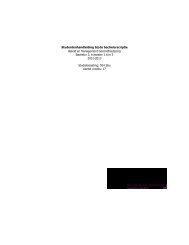Marten J. Poley - Erasmus Universiteit Rotterdam
Marten J. Poley - Erasmus Universiteit Rotterdam
Marten J. Poley - Erasmus Universiteit Rotterdam
- No tags were found...
You also want an ePaper? Increase the reach of your titles
YUMPU automatically turns print PDFs into web optimized ePapers that Google loves.
92Chapter 6Regression analysis of health-related quality of life differences betweenthe parents and the general populationWe hypothesized on whether it would be possible to explain HRQoL differencesbetween the parents and the general population. Both the EQ-5D index scoresand the EQ-VAS scores were taken as dependent variables. For furtherexplanatory purposes, we selected only those independent variables that wereconsidered most important. Moreover, predictors of HRQoL that correlated highlywith other predictors were not selected. The nine independent variables were:1. congenital anomaly (i.e., ARM or CDH);2. the child's age;3. symptom score of the ARM patients a ;4. symptom score of the CDH patients;5. taking care of the child alone or with a partner;6. (not) having given up paid work as a particular consequence of theanomaly;7. number of unpaid activities the parent can spend less time on (rangingfrom zero to six);8. monthly gross income b ;9. the child's HRQoL as assessed by the parent on the EQ-VAS.Construct validity of the combination of EQ-VAS and CareQolWe set out to verify the construct validity of the combination of the EQ-VAS andthe CareQol. We hypothesized that the parents who indicated that their healthstate would improve in the CareQol scenario (compared with those indicating thattheir health state would not differ or would even diminish) were more likely to:1. be parents of ARM patients;2. be female;3. take care of a young child;4. take care of the child alone;5. have given up paid work;6. report a shortage of time for more unpaid activities;7. have a lower monthly gross income;8. take care of a child with a relatively low HRQoL according to the symptomscore and the EQ-VAS;9. have a relatively low HRQoL (as expressed by the EQ-VAS scores and theEQ-5D descriptive system scores compared to the reference scores).abFor both patient groups a symptom score of the most relevant clinical symptoms wasconstructed. The ARM questionnaire measured stool difficulties such as lack of urgesensation, inability to hold defecation, and urinary incontinence, resulting in a symptomscore ranging from 0 to 12 (maximum symptomatology). The symptom score of the CDHquestionnaire, which aimed to measure respiratory difficulties, stomach aches, and otherdisease-specific symptoms, ranged from 0 to 45 (maximum symptomatology).Gross income from work was estimated on the basis of sex, age, and highest education. 34Income from social security benefits or capital were not taken into account. For all childrenwho have two caregivers with paid work, the incomes of both caregivers were considered.





